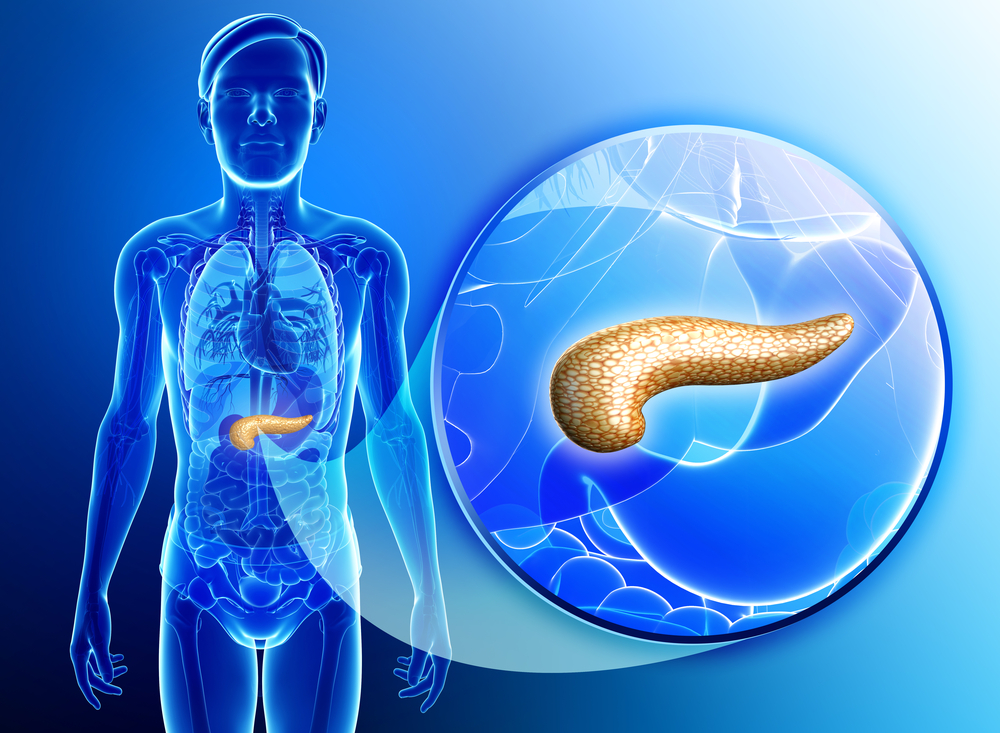Systemic Sclerosis Not Linked to Problems with Exocrine Pancreas, Which Carries Malnutrition Risk, Study Finds
Written by |

Systemic sclerosis (SSc) is not associated with clinically significant exocrine pancreatic dysfunction, a condition that can promote malnutrition in patients, researchers report.
Of note, exocrine refers to the part of the pancreas that functions as a gland, producing and secreting digestive enzymes.
The study, “Exocrine Pancreatic Function is Preserved in Systemic Sclerosis,” was conducted in Sweden, and published in the journal Arthritis Research & Therapy.
Although malnutrition affects about 18% of patients with SSc, its causes are not completely understood. Factors that may play a role include poor appetite, problems with the hands and fingers, esophageal and gastrointestinal (GI) dysmotility (weak and poorly working muscles), and small intestinal bacterial overgrowth. The GI tract is affected in up to 90% of SSc patients.
Exocrine pancreatic dysfunction has also been linked to SSc. Pancreatic juice contains enzymes that help digest the three major types of food (carbohydrates, proteins, and lipids), so an exocrine pancreas affected by SSc (exocrine pancreatic insufficiency, EPI) would likely contribute to malnutrition.
Because EPI can be easily corrected with pancreatic enzyme replacement therapy, it is important to clarify for clinicians whether SSc is linked to clinically significant exocrine pancreatic dysfunction.
Scientists recruited 112 SSc patients during scheduled routine visits (median age, 62; 89 women, 23 men; median disease duration, 7 years) and 52 others to serve as controls, matched for sex and age.
Malnutrition was assessed by means of the validated Malnutrition Universal Screening Tool (MUST), a five-step screening tool to identify adults who are malnourished or at risk of malnutrition. Eighteen SSc patients had a MUST score equal or higher than one (indicating malnutrition).
Exocrine pancreatic function was assessed by measuring the concentration of fecal elastase (FE), an enzyme produced by the pancreas that is not degraded as it moves through the intestines or at room temperature. If the exocrine pancreas is not working properly, the levels of FE will fall.
If the pancreas is affected by SSc, some of its tissue would be replaced by fat, and this alteration would be visible in a radiological exam. For this reason, investigators also analyzed computed tomography (CT) scans of the patients’ pancreas.
Researchers found that a similar, minor proportion of SSc patients (6 out of 112; 5.4%) and control subjects (3 out of 52; 5.8%) showed low levels of FE. No SSc patient had levels indicative of severe pancreatic dysfunction.
Patients with low FE levels did not differ from other SSc patients with respect to laboratory and clinical characteristics, including malnutrition. Disease subtype (diffuse or limited cutaneous SSc), or the presence of gastrointestinal symptoms were not statistically associated with low FE levels.
None of the SSc patients with low body mass index, or with a MUST score indicating malnutrition, had low fecal elastase levels. Collectively, these data indicate that EPI is not a major cause of SSc-related malnutrition.
But researchers detected a statistically significant difference in the radiological characteristics of the pancreas in SSc patients with low FE levels compared to controls. “The radiological analyses might suggest that SSc in some cases may manifest itself in the pancreas,” they wrote, “but on the whole, our study indicates that exocrine pancreatic function is usually preserved in SSc.”
Overall, the team was “unable to associate systemic sclerosis with clinically significant exocrine pancreatic dysfunction,” the study concluded.





